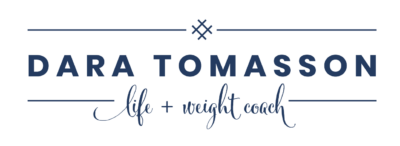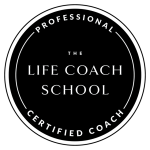I am a free motion quilting liberator. I am self taught because I wanted to be able finish my quilt projects 100% by me. Through much trial and error along with much dedication I am a professional long arm quilter!
Knowing that I could travel across the fabric when it wasn’t in the ditch (the ditch is the seams of the quilt)! This was a revelation to me. There are entire libraries of books devoted to free motion quilting, so to have one blog post about free motion quilting is crazy! So I am going to do a brief post about the very basics.
I had the opportunity to teach a basic free motion quilting course with Riley Blake. This course goes into more detail of the basics that I have written here. Also my video on YouTube is helpful. Learning new skills is always tricky where we often feel overwhelmed and vulnerable. If you want learn, please help me along the road. I am thrilled that I chose to dedicate so much time and energy to mastering this skill, it’s been an incredible road.
BASICS
Sewing machine
Feed Dogs- the metal grips under the needle that push the fabric as you quilt. There are two thoughts about what to do with the feed dogs when free motion quilting. I encourage you to practice free motion quilting with them up or down and feel the difference. I am interested in knowing what works best for you.

Quilting Table- this is an extension table allows a place for your left hand when quilting. I highly recommend using one of these when quilting. I have tried to quilt once without it and found myself at a great loss! Totally worth the investment. Another way to achieve this is by sinking the machine down into a desk so that the needle is flush with the table and allows great flexibility in the quilting.


Stitch regulator- this is a mechanism on your machine that allows the stitches to be the same size no matter what speed the pedal or your hands are moving. This is an added feature on most high end sewing machines. My machine Brother 1500 has a lot of speed and power but no stitch regulator. I have been able to practice enough that I can adjust the speed of my hands to the speed of my foot in order to find the desired stitch length for my quilting projects.
Before I started quilting on my Gammill I quilted for hire on my machine that does not have a stitch regulator and had wonderful results, so do not let this intimidate you in your success. Using a quilt sandwich to practice is a great way to gain confidence.

Quilting Feet for FMQ
In order to quilting in the ditch and other incredible straight line quilting designs one must use the walking foot (for straight) and a darning foot.
Thread
Size- Thread comes in all different thicknesses or weights. The higher the number, the thinner the thread. I almost always use a 50 weight thread for piecing and quilting.

Another aspect in understanding the thread labels is the slash. For example on this So Fine by Superior cone, the numbers are 50/3. 50 is the weight of the thread, but 3 is the number of strand that are wound together to create that strand of thread.
Colour- Auditioning colours for your quilting project is a lot of fun. I collect the potential thread colours and lay them across the quilt at least 20 inches so I can get a good idea of what that colour would look like. If you are new to free motion quilting and worried about the imperfection of your stitching, use a thinner thread like a 60 weight and use a blending colour. Also pairing a blending thin thread with a busy print is a great idea.
Threading on the cone- The direction of the thread will determine how the thread needs to come off the cone. If the thread is put on the cone diagonally, the thread need to come up off the cone before going through the thread path of the machine. If not the thread can continue to sew twisted and just like when you ring a wet towel, the towel gets shorter and thicker. This is what happens to thread and by the time it gets down to the eye of the needle, it has grown in size!
Needles
Type of Needle- there are so many different types of needles out there. In an effort not to confuse, I am going to keep this simple. Use a top stitch needle.

Size of needle- there is a size gauge on the size of the needle. There are two sizes on the packages because the American and Europeans.
Here is a diagram of the various components of the needle. Taken from wikipedia and then www.blueprint.com.

- The shank is the part of the needle that fits into your sewing machine, with the flat side to the back.
- The blade is what determines the needle size. (For example, a size 75 needle has a blade that is .75 mm in diameter.)
- The shaft is the “body” of the needle, and the groove that runs the length of the shaft holds the needle thread. The diameter of the thread you’re using should take up no more than 40% of the groove.
- The point and tip of the needle refer to the size, shape and length — all of which vary based on the type of needle.
- The scarf of the needle is an indentation on the backside that allows the bobbin hook to smoothly grab the thread under the sewing machine throat plate to create a proper stitch.
Tension
Tension- recommend to start off at 0 and then with a quilt sandwich practice stitching and see how that looks, if not good, try again.
Trouble shooting with tension TNT. First THREAD, rethread the machine then sew again. NEEDLE, change your needle and try. TENSION this is when the adjusting of the needle is helpful. Just do one thing at a time so you can figure out what the problem is. Speaking to the manufacturer of your machine can me helpful if you are still having trouble.

Other ways to trouble shoot your problems:
-clean the machine, lint and extra threads are big trouble
-oil the machine
-check the timing of the needle by catching the bottom thread
-quality of the thread
-age of the thread, thread can deteriorate over time
Quilting Gloves
My favourite are Machinger, they are breathable. They have sticky finger tips for more grip. They come in a variety of sizes. Always great to have on hand.
Actually Free Motion Quilting
Lets get is done! Here is a link to my video on YouTube of me explaining the process. I totally get that Free Motion Quilting (FMQ) is super scary- you spent so much time and effort on making this quit and you are terrified of messing it up.
You will mess it up at the beginning, middle and end of this process- this is a creative process that requires dedication for success. I am getting better every time I quilt. I do this as a business and I am constantly improving. Isn’t that exciting- the more dedication and practice the better you get! So I encourage you to take advantage of my free beginners class.
Check out my videos on YouTube talking and showing you through the process. Enough reading, lets get in front of our machines and get quilting. I can’t wait to see what you are creating. Sharing is caring, please share your progress and tag me in pictures that you post. Also, please feel free to ask me any questions that you may have! If you haven’t signed up for my email, please do.

